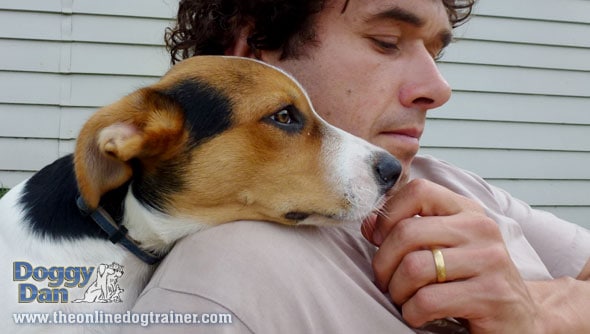The more I work with dogs the more I see that it’s so often the simple things that we really need to focus on. When it comes to ‘how to control your dog', it’s a case of going back to basics. Here are 3 simple concepts that I use in so many situations when working with dogs, puppies, and in fact many other areas of life. These principles apply to an infinite number of different situations. You will need to apply them to your specific situation, and very often I find that a simple rope or thin line can provide you with the kind of control that I am talking about.
1. Keep control of your dog
You can only train your dog if you have control of them! So often we allow situations to get out of our control and then try to gain control back. Not only is this approach exhausting and often frustrating but we also allow the very behavior that we want to prevent from happening, to happen. In a nutshell “prevention is better than cure”. For many years I looked for the answer to the question “What do I do if my dog runs off and won’t come when I call…” I realize now that the answer is “nothing”. There is no easy way to get them to come back to you. When the horse bolts from the stable it is too late to close the door. A simple short or long line allows you to keep control of your puppy or dog. Keep this on them until you are sure that they are listening to you. .
2. Focus on what you want
It is amazing how many times in life we actually focus on what we do not want. When you are walking your dog or training your dog, focus them on what you want them to achieve. This is actually a simple but powerful trick since we can only think of one thing at a time. This means that by focusing on what you want, you give your brain no space for thinking about all the things you do not want your dog to do! Try it now… try thinking about your dog and then at the same time think about an amazing holiday you took. See – it’s not possible. Your brain can’t do both… just one. Dogs are very smart at picking up on our intentions, thoughts and body language. Just look at Moses in the video, as soon as I started to video the sheep he started to move towards them! So stay focused on how you want your dog to behave.
3. Step in early
One of the great things about having a short or long line on a dog is that you are quickly and quietly able to take control of the situation without having to raise your voice. The beauty of this calm approach is that the situation is still relaxed. You are relaxed and your dog is chilled and it’s therefore easy to direct them where you want them. If you step in early before your dog really starts to behave badly, it’s easy to stop that behavior. If you leave it later it can be much harder as your dog’s energy starts to rise and they start to focus on what you don’t want – often becoming excited. Learn to recognize the subtle signs that they are going down the wrong path and then step in by taking control of the line.
So whatever you are trying to achieve with your dog, Keep Control, Focus On What You Want and Step In Early when things go a little wrong. Sounds simple and it often is with a little practice, and some thinking outside the square 🙂
Find out more here about how I use kind, gentle techniques to get dogs to calm down and listen when it matters mode: The Dog Calming Code
Have a puppy? Learn the same principles for training puppies in my Puppy Coach training program!
.
Keep it simple!
Cheers
 .
.







